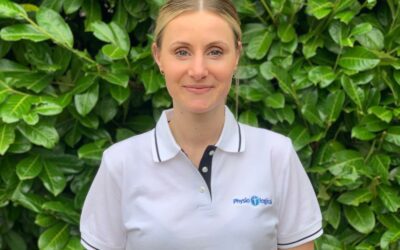What is a proximal Hamstring tendinopathy?
Proximal hamstring tendinopathy is a condition seen in patients of all ages from the young long-distance runners and sprinters to the more sedentary elderly person. It is also known as high hamstring or hamstring origin tendinopathy. The injury occurs at the attachment of the hamstring muscles onto the ischial tuberosity (your sitting bone).
It typically causes pain at the top of the leg and will often begin at the buttock crease and refer down the leg. It is classically aggravated by sitting, prolonged walking, driving and running. Often patients have had this condition for several months or even years before we see them. It is known to be a difficult, frustrating injury to resolve.
The proximal hamstring tendon stores energy during activities such as running and jumping. When the tendon is subjected to excessive, high energy demands over a prolonged period of time, injury can occur. It is believed that tendon overload drives structural change within the tendon resulting in weakness and pain.
How can proximal hamstring tendinopathy be treated?
Most people respond well to conservative management strategies. Physiotherapists often use a combination of manual soft tissue techniques and a progressive loading/rehabilitation program to strengthen the tendon and the muscle.
It is important to be aware that many tendon complaints are slow to improve and often take several months to improve. If you have had a tendon problem for over 6 months it can take a further 6 months or more to fully resolve. Rehabilitation is lengthy and takes both patience and persistence.
If you are not improving with rehabilitation and physiotherapy, shockwave therapy or an ultrasound guided injection may be a suggested management strategy to your treatment.
Is Shockwave effective at treating proximal hamstring tendinopathy?
There is evidence to suggest shockwave therapy is advantageous in managing proximal hamstring tendinopathy. A study using 40 professional athletes with proximal hamstring tendinopathy treated with conservative therapy or shockwave therapy found patients in the shockwave group showed significantly less pain 3 months post treatment. 85% of patients receiving shockwave had at least a 50% reduction in pain at three months post treatment.
Currently this is the only study focusing on hamstring tendinopathy, the results from this study indicate that shockwave is an effective and safe treatment option for this injury. Therefore, to optimise recovery time and increase likelihood of pain reduction shockwave therapy is highly recommended. When you pair these findings with research covering other tendinopathy injuries the consensus is that shockwave is a gold standard treatment option for all tendon related pain.
If you are struggling with pain around your lower buttock area and finding it difficult to sit or move without pain then please enquire today about receiving shockwave treatment.
To book your shockwave appointments with Physio-logical, based in Rowlands Castle, Hampshire then please book online, call 023 9435 0270 or email us at enquiries@physio-logical.net. Research suggests 6 sessions are optimum at intervals of 5-10 days between appointments.




